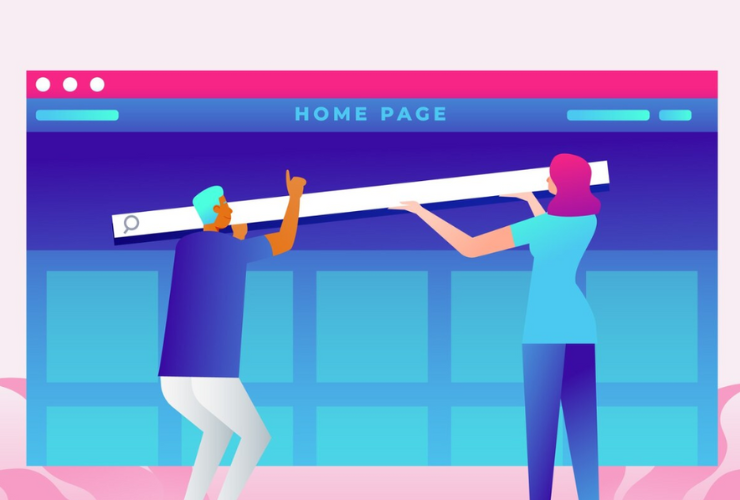When developing applications, it is of utmost importance to make an application intuitive, easy to use, and beautiful. Consistency is the key to this when creating Windows applications. Consistency in design makes understanding and using the app easier, which in turn enhances usability, satisfaction, and reduces errors. In this blog, we will explain why consistency is important in Windows app design and how it affects the user experience, performance, and long-term success of your app.
1. Improves Usability
Usability is the foundation of any application’s success. A usable application enables people to learn and use it quickly without requiring detailed instructions. By ensuring sustained design aspects, like color schemes, font styles, button designs, and layout patterns, users can easily switch between one part of the app to another. Sustained UI design provides a smooth transition and helps users anticipate where exactly they are going to find certain features, which minimizes their learning process. Moreover, it instills confidence and trustworthiness, which are instrumental in successful long-term engagement.
Tip: Use common UI widgets such as buttons and menus the way users expect to see them, instead of creating custom widgets that might confuse first-time users.
2. Improves User Experience (UX)
Clean user experience is integral to the prosperity of any app. Layout consistency, behavior, and interaction are what reduce user mental effort associated with learning to use the application. The user’s experience will be smoother and more pleasant whenever they do not have to rediscover how your app works along the way. Consistency not only makes the app easier to use but also enhances the experience. By eliminating uncertainty and confusion, users can concentrate more on getting the job done and less on learning how to use the app.
Tip: Make consistent use of icon placement, action buttons, and menu items throughout the app to establish an intuitive interaction flow that users can follow naturally.
3. Maximizes Efficiency
Consistency directly impacts how effectively the users can accomplish their tasks. When the users exactly know where the tools that they require are and how to use them, they become effective and confident about the app. Consistent design increases familiarity, and the more familiar the users are with your app, the quicker they will be able to get things done. Whether it’s anticipated navigation, consistent placement of buttons, or uniform interaction behavior, efficiency is significantly increased through consistency, which also pays dividends in terms of user retention and satisfaction.
Tip: Use default controls and layouts so users don’t have to think about how to perform common operations, leading to faster use of the application and enhanced productivity.
4. Reinforces Brand Identity
Consistency in design aids in establishing and strengthening your app’s brand identity. When people see the same patterns, colors, and themes throughout your application, they start relating those visual elements to your brand. This builds a unified brand image and enhances recognition. Design consistency aids people in recognizing your app immediately, which differentiates it in a competitive marketplace. Additionally, when people trust your app’s functionality and look, it translates into improved engagement and loyalty.
Tip: Use a consistent color scheme, typography, and iconography that is consistent with your brand identity on all user interfaces and interactions.
5. Makes Maintenance and Updates Easier
A consistent design app is simpler to maintain and update. When the design is consistent, introducing new features or updating existing ones is less complicated. New features can be added without interrupting the user’s experience. Secondly, consistency lowers the risk of the inclusion of bugs that would impinge on the app’s operation since developers have well-established and knowable constituents at hand. The outcome is shorter development cycles and fewer customer issues post-update.
Tip: Implement design patterns such as repeatable components and module elements in order to be certain that the new functionality incorporates harmoniously within the existing form.
6. Increases Accessibility
A uniform appearance is also required for accessibility. Visually, cognitively, or physically impaired users should be able to navigate apps without becoming disoriented. Consistent UI elements and foreseeable navigation allow for accessibility tools like screen readers or voice recognition programs to provide an accurate and fluid experience. Developers can make apps more accessible to more individuals by embracing best practices for accessibility, including high-contrast color use, large font sizes, and minimalist iconography.
Tip: Follow the Web Content Accessibility Guidelines (WCAG) and make all interactive items clearly identifiable and usable to users with different abilities.
7. Compliant with Platform Guidelines
Windows offers design systems such as Fluent Design and WinUI to provide consistency with app development. These systems provide guidelines and pieces to make sure your app blends seamlessly into the overall Windows environment. By adhering to these guidelines, you provide a smooth and consistent experience on various devices and screen sizes. This makes users feel comfortable no matter what device they use, whether it is a desktop, laptop, or tablet. Additionally, following platform guidelines ensures that your app acts in a predictable manner within the Windows ecosystem.
Tip: Use Fluent Design for a responsive, modern interface, and WinUI to build consistent and visually appealing UIs that integrate well with the Windows platform.
8. Enhances User Retention
Consistency is also important in maintaining users’ interest in your app over a long period. If users consistently experience something familiar with your app, they will most likely return and use your app again. This is how familiarity generates user trust and makes users feel at ease going through the app. Consistency minimizes the chances of users getting frustrated or lost, something that mainly results in abandonment.
Tip: Continuously review user comments and analytics to determine where areas of your app could benefit from a more stable experience and rework those features to align with user expectations.
9. Optimizes Performance and Reduces Errors
Design consistency also improves the performance of your app. The performance optimizations can be implemented when your app adopts consistent design principles. You have the assurance to use pre-validated patterns and UI elements so that the occurrence of errors that result from disconnected designs is unlikely. Standardized coding practices are also faster for debugging and create fewer performance bottlenecks, which eventually produce a more efficient and stable app.
Tip: Leverage platform-recommended design systems and reusable elements to keep your code efficient and avoid unnecessary overhead, so your app runs smoothly.
Conclusion
Consistency in Windows application design is more than a matter of visual taste—it’s a strategic decision that enhances usability, enriches user experience, increases brand identity, and streamlines the development process. By adhering to regular design conventions and following platform guidelines, you guarantee that your app is simple to use, accessible, and easy to update. Consistency is ultimately what will make an app that people will love using, sharing with others, and trusting. While developing and building out your Windows app further, keep in mind that a consistent design will form the basis of its long-term success.
Contact Us Today













 Database Development
Database Development












































